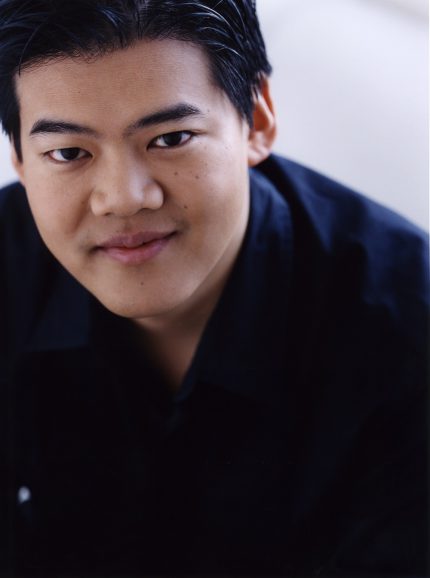UC Presents serves up a bracing array of chamber works in Ligeti series

The University of Chicago Presents’ season-long exploration of the music of György Ligeti continued Friday night at the Logan Center with a wide-ranging program of the composer’s chamber music. The works presented spanned almost 40 years of Ligeti’s productive life, and while the performances were varied, it was a rare and welcome opportunity to have such a perspective on the Transylvanian maestro’s oeuvre.
The evening opened with Ligeti’s Sonata for Solo Viola, performed by Spektral Quartet violist Doyle Armbrust. Composed between 1991 and 1994 for Tabea Zimmerman, the Sonata bears a structural similarity to Bach’s Partita No. 2 in D Minor or Solo Violin, beginning with a spacious prelude and ending with an elaborate chaconne.
Armbrust was at his best in the slower movements. He artfully constructed an arc from the semplice opening of the “Hora lungă” to its more disquieting moments and back again, as well as projecting an elegiac quality in “Fascar” (written in memory of Ligeti’s teacher Sándor Veress). The faster movements—“Loop,” “Presto con sordino,” and “Chaconne Chromatique”—were somewhat straightlaced in Armbrust’s rendition. One wanted a bit more brutality and abandon when the music called for it, though the soloist’s technical command of the knottier passages was nonetheless impressive.
Local piano powerhouses Winston Choi and Kuang-Hao Huang teamed up for Ligeti’s Three Pieces for Two Pianos, which was a highlight of the evening. The isolated opening chords of “Monument” were megalithic in their impact, and the pianists’ assured playing imparted a sort of modernist nobility to the movement. “Self-Portrait with Reich and Riley (with Chopin in the Background)” predictably bears the influence of minimalism, with which Ligeti was experimenting at the time he wrote the Three Pieces in the early 1970s. Choi and Huang produced a flurry of notes in patterns that gradually shifted, and the movement closed with an impetuous episode showing off the pianists’ stunning dexterity. The closing “Bewegung (In a Gentle Flowing Movement)” had an undulating, aquatic quality, the pianists’ refined textural modulations capturing the movement’s placid character.
Choi was joined by violinist MingHuan Xu and French horn player Anna Spina—both members of Ensemble Dal Niente—for Ligeti’s Trio for Horn, Violin, and Piano of 1982. This work is challenging for performers even by the standards of Ligeti’s generally demanding oeuvre, and the three players rose to the occasion with aplomb. They captured the wandering opening movement’s modernist Romantic sensibility, and the driving Vivacissimo molto ritmico was delivered with all due energy. The off-kilter Alla marcia had a quirky regality, and Xu’s anguished playing in the desolate Lamento proved another high point of the evening.
Sadly the concert ended not with a bang but a whimper as the Imani Winds—the University of Chicago’s Don Michael Randel Ensemble in Residence—took the stage for Ligeti’s Six Bagatelles. When this concert was announced, the Imani had been billed to play the composer’s thorny Ten Pieces for Wind Quintet, but apparently opted for the more approachable Bagatelles in the intervening months. This was probably a wise choice, as even here there were problems.
Throughout the performance the ensemble between members was unconvincing in more spots than one could count. In the Allegro grazioso the octave intonation between flute and oboe was jarringly off, and their lines’ precise “pick-up” rhythms (which actually fall on the beat) were approximate at best. Horn splats abounded and the players ended a solid note apart in the racing accelerando of the final Molto vivace. Personality-driven playing does not make up for such technical deficits.
Interspersed throughout the program were performances by Choi of the first three Piano Etudes by Ligeti student Unsuk Chin—No. 1: In C, No. 2: Sequenzen, and No. 3: Scherzo ad libitum. These were engaging character pieces that Choi imbued with immense color and vitality. Together they provided a compelling glimpse of how Ligeti’s aesthetic has been processed and assimilated by one of his prominent musical descendants.
The next program in the University of Chicago Presents’ Ligeti Series will take place 7:30 p.m. February 2 at the Logan Center. eighth blackbird will be joined by the Hungarian ensemble Amadinda Percussion Group for Holló’s 39—the Dream of the Manichaeian / before JOHN3, Lukas Ligeti’s Incandescence, arranged selections from Ligeti’s Etudes, and Reich’s Mallet Quartet and Sextet. https://chicagopresents.uchicago.edu/
Posted in Performances





Posted Nov 13, 2017 at 2:07 pm by ChiLynne
I’m admittedly not musician enough to counter your objections with respect to the Imani WInds’ performance of the Ligeti Bagatelles. However, I can say that I found their performance delightful, joyful, and spirited music-making. We are so accustomed to the technical perfection of recordings that live performance, however compelling, may not measure up to what may have involved multiple takes and some edit magic. Sometimes, one should just enjoy!